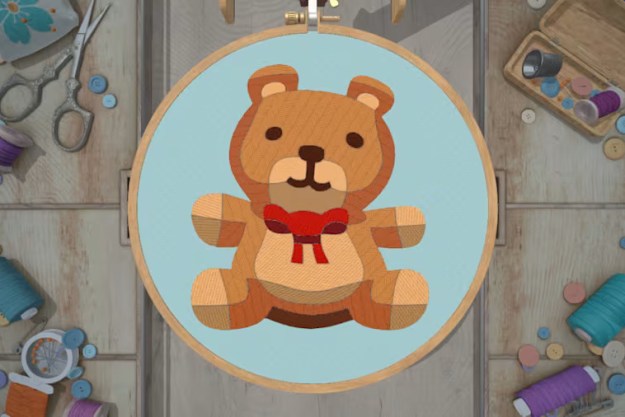Bomb Rush Cyberfunk is Team Reptile’s (the studio behind the hit pseudo-fighting game Lethal League) upcoming spiritual successor to SEGA’s Jet Set Radio titles. The game is much more than just that though. I spoke with the game and team director, Dion Koster, who told me about his beginnings, what inspired Bomb Rush, and his goals for the “street culture symphony.”
What’s your background? I remember you once posted that you felt BRC was like an accumulation of things you’ve done before. Did you do dance, graffiti, and all that?
Dion Koster: I first started with inline skating and it quickly became a way for me and my friends to be ourselves against the average environment or something along those lines. In the case of dancing, I’ve loved it since I was a kid. My mother told me about a breakdance class, I joined, and immediately fell in love. A few others and I just started meeting at random spots and at different people’s places to jam. We really dug into the culture thanks to our teacher constantly talking about it and the history behind the art. We just really felt like we were a part of it and that stuck with me.
From there, I and a few of the other more dedicated students would follow my teacher to a sort of school of hip-hop theater he taught at in Amsterdam. We went to weekly classes taught by legendary dancers, rappers, and people in the neighborhood. I got a lot of cultural things from that and met people who were growing up in Amsterdam and Almere which had a lot more going on in terms of hip-hop than our little town.
So after being in so many places and meeting and so many influential people I don’t feel like I’m coming in with an outsider’s point of view. I feel like I have to honestly represent.
What led you from that to the world of video game development?
I had a lot of duality in life. Half the time I’d be in my little hometown sleeping or doing my own thing in my room. The other half I’d go out to Amsterdam to go to a jam, training, and other fun stuff. The city was so full of life but at home, that was just not the case so like any kid I played video games.
While playing, I’d think things like, “I wanna make my own game!” Or I’d play a game and disagree with something and wanted to make something slightly different. In the case of Sonic the Hedgehog, I would draw my own levels and get my little brother to play them by moving his finger across the level while I “dungeon mastered” him through the stage.
Eventually, I just looked up, “make game” on Google and found the program, “Game Maker.” I’d be doing that at home anytime I wasn’t out dancing in the city and really got into taking other people’s creations and adding or changing things. There was this little car game where you’d be a driver having to dodge other cars and I changed the player car into Gohan from Dragon Ball, added the theme music, and the ability to shoot blasts. I think that was a mentality I got from my hip-hop side where sampling is the way to go. I still apply that mentality to games, especially with Bomb Rush if you notice the similarities to another game.

After I graduated high school I went into games education I met my colleague and business partner and Team Reptile started as a two-man thing. We gathered more and more people we could afford over time with the money made from releasing our games, financing game after game with money made the previous one.
How has your style of game development evolved into the style seen in games like Lethal League and Bomb Rush Cyberfunk?
Over the years, the games have started to shape more and more into what I feel like is my honest expression. At first, the games we made were, “game games,” like our first game, Megabyte Punch. Just mixing some Smash Brothers with a Medabots thing. Over time, came Lethal League where I would acknowledge that I’m not the best artist but I have something nobody else has and incorporated my style choices. Now Bomb Rush seems to be the height of it. I’m not sure I can go further than this though [he laughs].
Sometimes I compare it to other director’s work where you can see their youth in the stuff they create. Miyamoto says he used to always explore caves and in Zelda, you see nothing but those and dungeons. Then you’re collecting bugs and other stuff concerning the fact that he was outdoors a lot. That’s his passion and something that stays with him all his life.

For me, I came to see that going out on the street was my adventure. My city fantasyland where the hero’s journey takes place. Going to the city, to a jam, seeing people do this crazy stuff, competing, cheering on my friends, and just having crazy interactions skating. Then going back home to normal, which made the city seem even more like a fantasy land.
What inspired the world of Bomb Rush? What are some elements you feel were important influences?
The sincerity of visuals is really important to me and most creators do it wrong. It matters for something to feel honest. You can really see it in fashion when it comes to clothes and immediately seeing something being too extra. In games, there’s a lot that’s too extra because in real life you have to walk around in it. That’s why we have these ridiculous-looking characters with the excuse being a fantasy so it just works. For me, that doesn’t cut it. With every character, I want to think that they are believable with no disconnect.
That’s a piece of the character design things I think about and but at the same time, you want to create some crazy silhouettes. In the case of Bomb Rush and its hip-hop inspiration, I feel like hip-hop and street culture are about innovation. When I look at hip-hop I see a lot of technology. Turntables, boomboxes. Even the style with sneakers looking like some kind of spaceship or something at times.

That future mentality is something that influenced me to make the Bomb Rush world this way. I gave them “Boostpacks,” which are jetpack machines that allow more freedom of motion and let them float in front of graffiti spots to do their slashing finishing move.
What types of challenges have you encountered while creating the game?
The scope for sure. Things can really get out of hand with a 3D open world. I’m always telling everyone to not go off check with additions because of it. Yes, adding that one small thing could make the game better, but you have to see the implications of every small thing you add.
We have a game focused on exploration so you have to find the graffiti spots in the stage, paint them, and then you can go further in the stage, meet other characters, and encounter conflicts. It all has to play into each other. You can’t have a different system for conflict than you have for exploration. What you have to do the most has to be fun and has to be the tool that you use to interact with the whole world, which in this case is doing tricks while moving around. We can’t have you run into the conflict and go, “And then you pull out your gun.” [he laughs] The same system (tricks and graffiti) has to be the way you interact with the police enemies as well.
There was a lot of praise for your Black character designs, especially the Black women. Sincere designs of them are seldom seen in many video games if at all. How do you curate them to make them feel real while still being stylistic?

What I see a lot lately is companies going, “Ok we’ve got to include lots of different people in our games.” And while the intentions are usually good you can feel like it’s being made by people who haven’t met those different people and they end up falling into these “stupid mistake” traps like them not giving Black people light palms.
Throughout my life, I’ve made so many friends of different cultures that I feel like I can normally create any type of person without doing them a disservice. People with different hairstyles, clothing styles, etc. I feel like that’s a luxury that not many people have. In some cases, I will check with my friends a part of different cultures to make sure things are honest as well.
It’s good that games and different media are trying to include more Black people in any setting, but I always wonder if it’s really honest. If you get some office worker designing a crew of street people it isn’t going to feel like real people. The only solution is to get someone with real-life experience in that to design them.
What are you looking to accomplish with Bomb Rush Cyberfunk?
It’s an evolving thing. Right now it feels like it’s turning to a “street culture symphony” where I’m throwing in everything that I want to express to the larger world. I have so much fun in my life and so many crazy things that I’ve known, seen, and still do that aren’t visible to most. I talked earlier about how I feel the city is a fantasy. People play so much Zelda and medieval fantasy or watch those movies. To me, that same type of wondrous fantasy adventure is street culture.
Trying to make the ultimate game, I would like to play myself is also a part of it. I’m not only trying to teach people these things but I just dig this that much. If there was already a game like this out there I wouldn’t have to make something like this.




